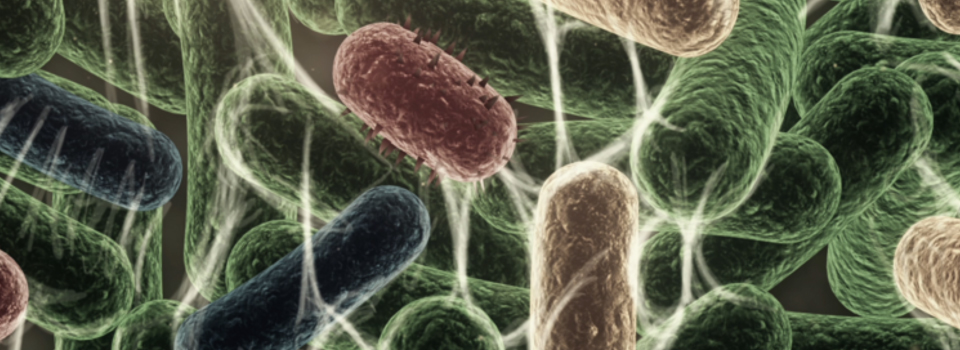Why do we find biofilms so fascinating? Is it because, without the presence of a scheming mind, they can still transform their community into an impenetrable fortress while coordinating defences and attacks? It is natural survival at its best.
You may have felt a biofilm in a riverbed as the slimy layer on a stone. You may have seen or felt biofilms in your mouth as plaque building near the gum line. In a food factory biofilm can be invisible. Clinging to surfaces and equipment, resisting any attempts to destroy it by chemical disinfectant. Waiting for an opportunity to contaminate.

How do biofilms behave?
First they send out “tentacles” looking for a suitable place to anchor (adherence phase). Once they have a hold, they attract any other bacteria, regardless of species, to join them. For protection the community secretes a slimy substance called EPS (ExoPolymeric Substance). This EPS layer is like a fortress wall around the community, protecting it from physical and chemical attacks.

Living inside this fortress the microorganisms receive the nutrients and water they need to survive, thrive and multiply (growth phase).
And here is where it gets even more interesting.
These varying species of microorganisms actually start to communicate and collaborate! They do this by way of quorum sensing (QS) which is a chemical language. It enables bacteria to share information, detect cell density and adjust gene expression. It also allows for the coordination of defence and attack strategies, sending signals to detach and reform in other areas – much like commands on a battlefield during an invasion.
Food factories experience this as spikes in their bacteria count. This is a particularly dangerous phase for the factory. During this phase the “loose” bacteria look for new places to colonise, or food products to contaminate.
Another dangerous element in a biofilm is the presence of persister cells. These specialised survivor cells choose dormancy, making themselves even more resistant to disinfection. They are the “navy seals” of the community. During the dispersion phase they reawaken, and rush to find a new territory to invade. Spreading and taking hold faster than before.
It is significant to keep in mind that biofilm bacteria is not the same as free-floating bacteria. It is often responsible for bacterial resistances.
Regaining control of your factory
The first step is to find out if biofilm is present and then where to find it. Spikes in your microbial count are pretty reliable positive indicators. But where to start looking? BioFinder makes the invisible visible and will reveal hot spots on the surface. Carbotect and Alvim will reveal biofilm in water sources and closed circuits.
The next step is to destroy the slimy defence shield and expose the unprotected bacteria for elimination. Not an easy task! But, by using enzymatic cleaners for either open surfaces or closed systems you can kill them.
And finally, you will need to remain vigilant because they WILL try to reform. But now you know their secret. You know what to look out for, how to find them, and how to destroy them.
You have control!
There are so many interesting papers written on the subject and this one on Quorum Sensing is particularly interesting to understand the secret life and language of biofilms: “Quorum Sensing and Bacterial Social Interactions in Biofilms”





